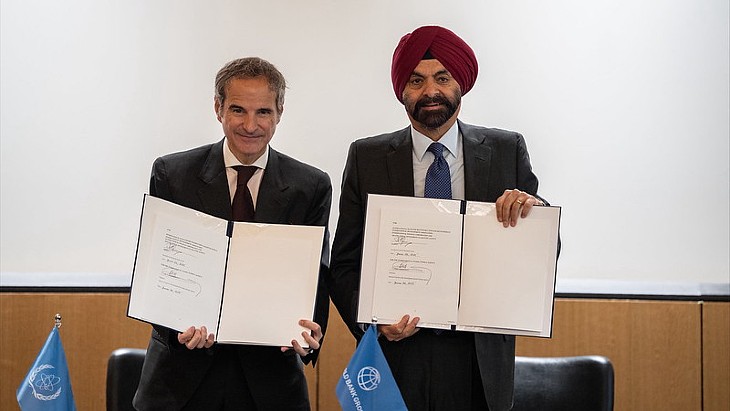Mars 2020 rover gets radioisotope fuel
.jpg)
"The decision to begin fuelling the MMRTG is another important milestone in keeping to our timetable for a July 2020 launch," NASA Associate Administrator for the Science Mission Directorate Thomas Zurbuchen said.
The California Institute of Technology's Jet Propulsion Laboratory (JPL), which is building and will manage operations of the Mars 2020 Rover for the NASA Science Mission Directorate, describes an MMRTG as a "nuclear battery" which can provide about 110 watts of electrical power to a spacecraft and its science instruments at the beginning of a mission. The excess heat from the generator can help to keep the system warm enough to function in the cold conditions of space and the Martian surface.
In all, 27 past US space missions have used radioisotope power, from the radioisotope heaters used in some of the experimental equipment used during the 1969 Apollo 11 moon landing to the Curiosity rover which is currently active on Mars.
The generators consist of a heat source that contains plutonium-238 and thermocouples that convert the plutonium's natural decay heat energy to electricity. The generators consist of a heat source that contains plutonium-238 and thermocouples that convert the plutonium's natural decay heat energy to electricity.
.jpg.aspx)
The Mars 2020 rover's MMRTG before fuelling and testing at the Idaho National Laboratory (Image: NASA/JPL-Caltech)
MMRTGs are provided to NASA for civil space applications by the US Department of Energy. The radioisotope fuel is inserted into the MMRTG at the DOE's Idaho National Laboratory before the MMRTG is shipped to the launch site, and this is timed according to the launch date of the mission. JPL uses electrically heated versions of the MMRTG to verify and practice integration of the power system with the rover.
The Mars 2020 mission is scheduled to launch from Cape Canaveral Air Force Station in Florida in July 2020 and land at Jezero Crater in February 2021. The mission is being used by NASA as part of its preparations for human exploration of Mars, alongside missions including manned missions to the Moon. The agency plans to establish a sustained human presence on and around the Moon by 2028 through the Artemis lunar exploration programme.
"Our Mars 2020 rover is on a historic mission - the first leg of a round trip to Mars," Zurbuchen said.
_92619.jpg)


_84504.jpg)







